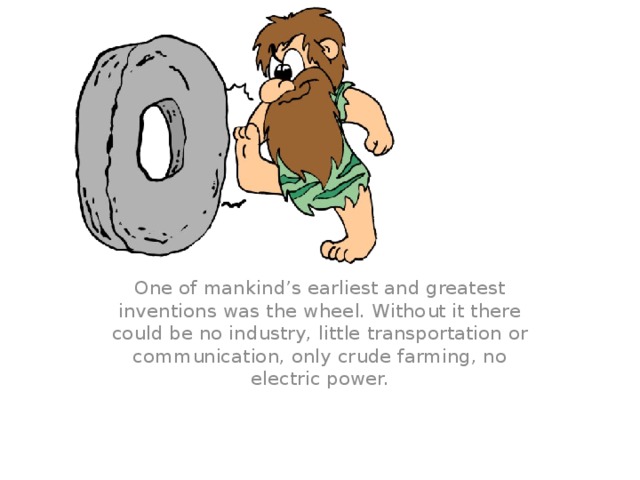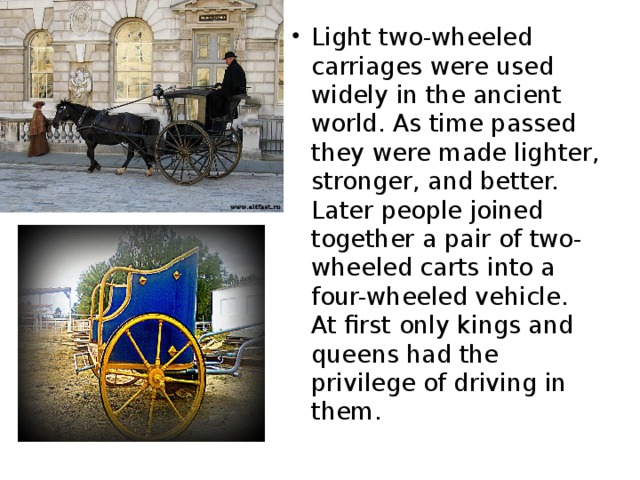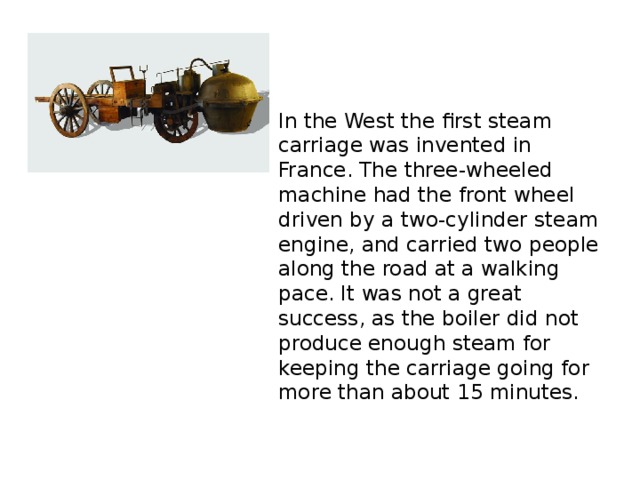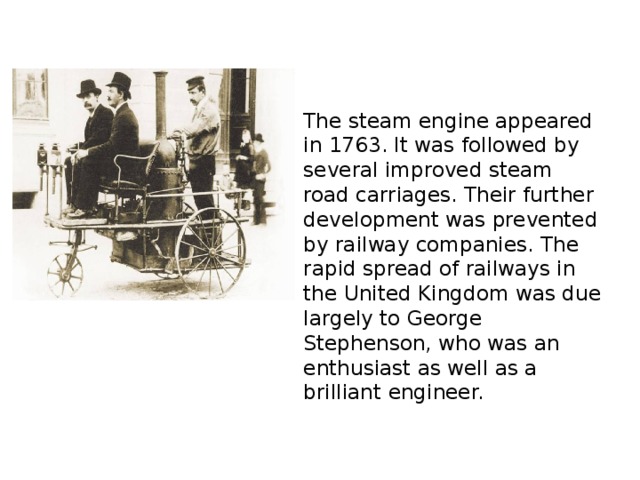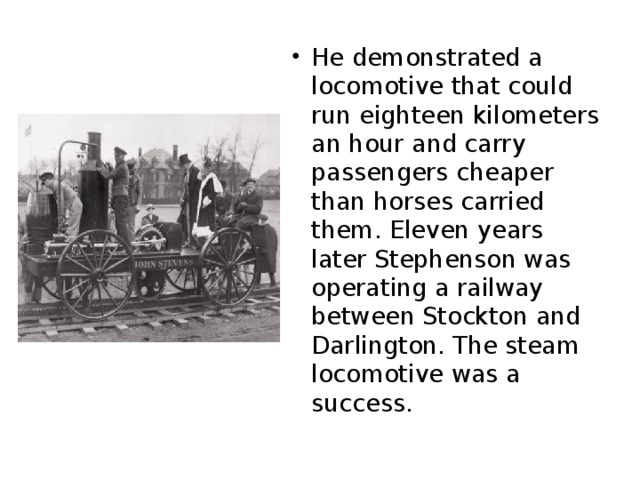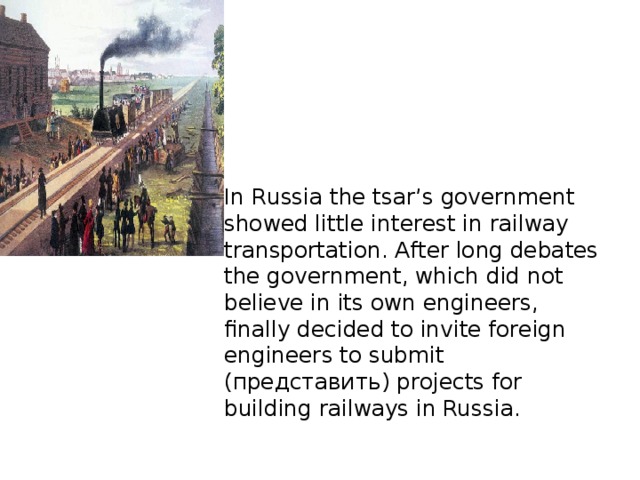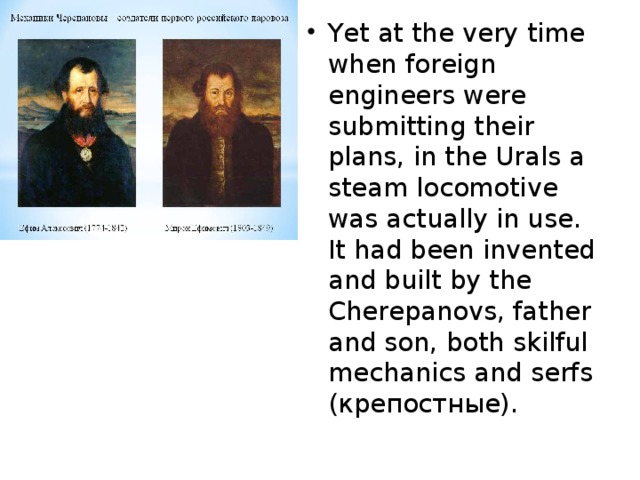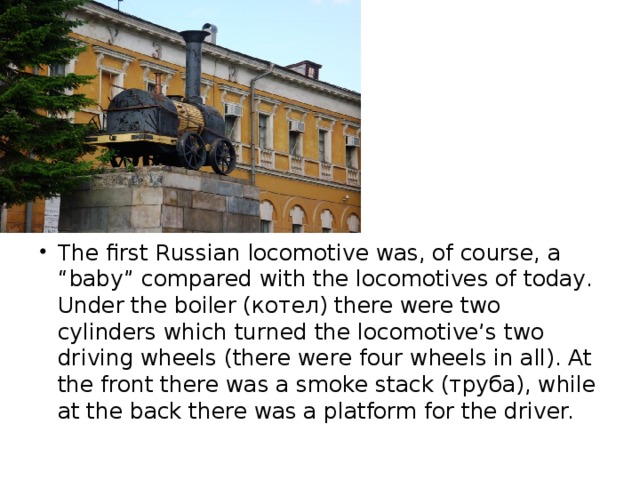Урок составлен для студентов 3 курса. Цель занятия - развитие навыков чтения текстов по специальности; пополнение профессиональной лексики; совершенствование навыков говорения. В начале урока студентам предлагается чтение текста - презентация. Далее выполняются задания: найти слова в тексте, заполнить пропуски в предложениях, ответить на вопросы. Презентация составлена на основе текста из учебника "Английский для инженеров" Т.Ю.Полякова и др.
Просмотр содержимого документа
«Задания к тексту»
THE WHEEL, STEAM CARRIAGES AND RAILWAYS
Задание 1. Найдите в тексте следующие слова и словосочетания:
Человечество, изобретения, примитивное сельское хозяйство, след, каменный век, сплошной диск, решать, отверстие, спица, покрывать, резина, древний мир, телега, пар, котел, мешать (предотвращать), железная дорога, быстрое распространение, дешевый, приглашать, вращать, ведущие колеса,.
Задание 2. Divide the text into 4 parts and choose the best titles to each part.
a) The beginning of the railway transportation in Russia.
b)The invention of the first steam locomotive.
c) The development of the wheel.
d)two-wheeled and four-wheeled carriages.
Задание 3. Заполните пропуски в предложениях.
One of the mankind’s earliest and greatest ………………. was the wheel.
Nobody knows when the ……………… was invented.
There is no ……….. of the wheel during the Stone Age.
During the Bronze Age ……………. and …………… were used as work animals.
At first all wheels were …………………….. ……………. .
The problem to be solved was to make the wheels …………. and at the same time keep them strong.
Later people joined together a pair of two-wheeled carts into a ………….-……………. vehicle.
It was not a great success, as the boiler did not produce enough …………… for keeping the carriage going for more than about 15 minutes.
The further development of steam road carriages was ………………. by railway companies.
Задание 4. Ответьте на вопросы.
What kind of animals were used for work during the Bronze Age?
What were the first wheels like?
What are the stages in the development of the wheel?
How many people did the first steam carriage carry?
Who demonstrated the first locomotive in the United Kingdom?
Was the Russian government interested in railway transportation?
Who were the Cherepanovs?
What was the first Russian locomotive like?
Are the locomotives widely used in Russia?
What kind of locomotives are used in Russia now?
Просмотр содержимого презентации
«Презентация the first automobils»
